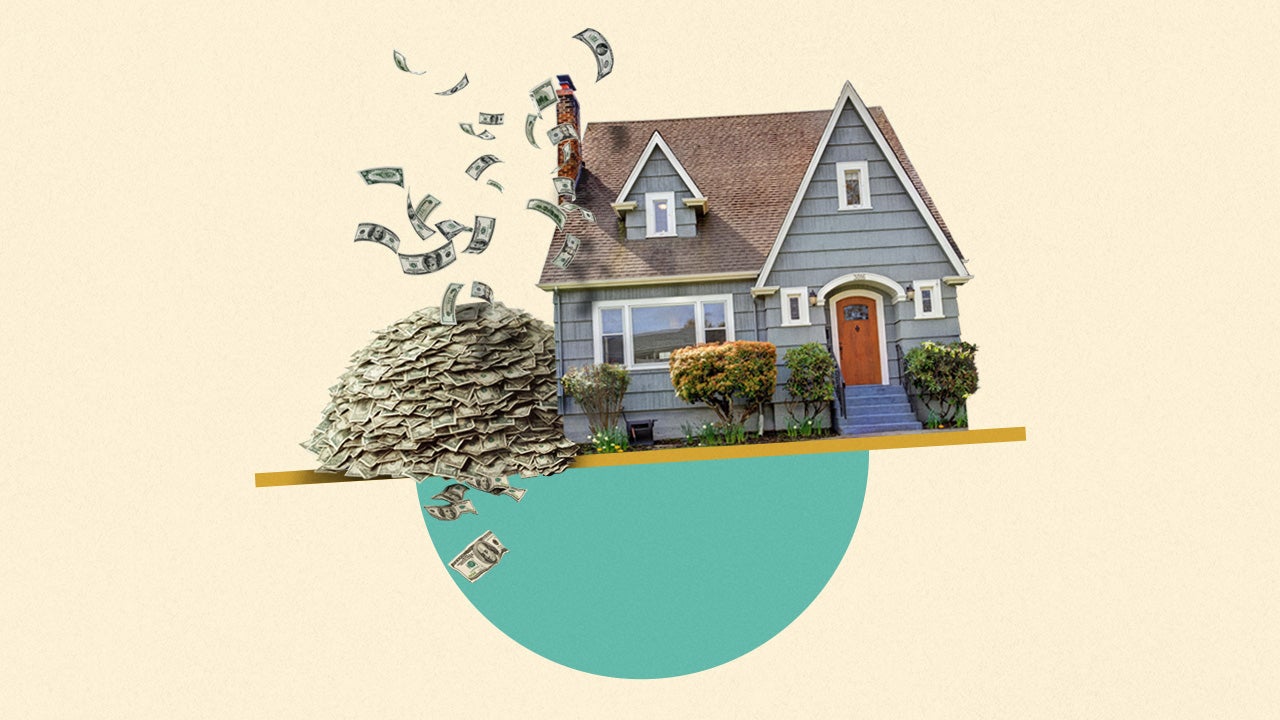How to read a mortgage escrow statement

If you own your home, there’s a strong chance you have an escrow, or impound, account with your mortgage lender (assuming you financed its purchase). This account is used to pay property-related expenses like property taxes, mortgage insurance and homeowners insurance, all of which are wrapped into your monthly mortgage payment.
As the end of the year approaches, you’ll probably be receiving an annual statement about this account from your lender. These statements contain a lot of information, and for new homeowners, they may be a little confusing. So let’s show you how to read your mortgage escrow statement.
What is an escrow account?
But first, a refresher on escrow. An escrow account is a type of financial account set up and managed by your lender (usually, though any third party can do it). Part of your monthly mortgage payments are put into the account — the sums that include an amortized portion of your home/mortgage insurance premiums and property taxes. When these premiums and taxes are due, your lender pays them on your behalf using the money in your escrow account.
Escrow, or impound, accounts became more common after the Great Recession of 2007-09. That crisis had been triggered by a collapse in the real estate market, which had been caused, in part, by overextended homeowners who were unable to pay their taxes and insurance premiums. For the protection of everyone — lenders, homeowners, municipalities and insurers — a newly created government agency, the Consumer Financial Protection Bureau (CFPB), established guidelines for escrow accounts.
“One of the best practices that came out of the CFPB, especially for first-time homeowners, was establishing an escrow account, so they would not run into that problem again,” says Debra Johnson-King, executive director of Global Empowerment Development Corporation, a HUD-approved housing counseling service, who also works with One United Bank in Florida.
For example, if your property taxes are $2,400 a year, and your homeowners insurance premium is $1,200 a year, your mortgage servicer will require you to pay $300 every month to your escrow account. By paying the extra $300 every month, you don’t have to scramble to come up with $3,600 every year. It’s essentially a forced savings account that protects you and your lender from a property tax lien or losing your home in a fire with no insurance.
When you have an escrow account, your total monthly mortgage payment includes principal and loan interest, plus your property taxes and your homeowners insurance (or hazard insurance), and flood insurance if you’re in a flood zone as well. If you have private mortgage insurance (PMI) or mortgage insurance premiums (MIP), those are included as well.
That means your monthly payments could change, even with a fixed-rate mortgage, if your other expenses fluctuate. So if your property taxes or insurance premiums go up, so will your monthly payments to your mortgage lender.
What information is on an escrow statement?
Typically, escrow statements have several different sections. “Normally at the top, you’ll have your account number, the date that the statement was prepared on, you’ll have your principal balance, the property address, those types of things,” Johnson-King says.
The statement will also list your insurance, your property taxes, and the due date of each of those items, plus the projected disbursement of how much your lender expects to pay when each of those items comes due.
What is an escrow balance?
Your escrow balance is the total amount currently in your escrow account that is held for payments your lender will make on your behalf. This balance reflects payments you have made into your escrow account minus any deductions made from your escrow account — for paying the insurance premiums and property taxes.
Escrow balance vs principal balance
On your paper mortgage statement or your account dashboard online, you’ll see two different balances if you have an escrow account: the escrow balance and the principal balance.
- Your escrow balance is the amount held for payments like insurance and property taxes.
- Your principal balance is the amount still owed on your mortgage.
What is an escrow shortage?
Lenders often base your escrow payments on estimates of your property taxes and other expenses. If your taxes go up or your property is assessed for a higher value than anticipated, your escrow account may not be able to cover the full charges. This creates an escrow shortage, also referred to as an escrow shortfall.
In this situation, you could owe a larger lump sum at the end of the year to cover the shortage. If you’re worried about such unexpected costs, you may be able to pay extra into your escrow account in advance — a surplus known as an escrow cushion.
If you’d like to create a cushion in your escrow payments, contact your mortgage servicer and ask if they’ll accommodate you. Every servicer has its own requirements and limits for accepting additional escrow payments.
What to watch for in an escrow statement
The amount covered by your escrow account isn’t up to your servicer though. It’s determined by your insurance company and local property taxes. If you’ve recently filed a big insurance claim or your school district recently agreed to replace an asbestos-ridden high school, it’s a safe bet that your escrow payments will go up and you may end up with a shortage.
The big thing to watch out for: a shortfall. “Borrowers really need to see if there’s a shortage because that’s what’s going to cause the most negative impact to their pocket,” Johnson-King says.
Those reimbursements apply to intentional ‘cushion’ overpayments, too. If you end up paying in more than you owe, “you should be able to get money back,” says Johnson-King. “By law, if the account has a surplus of $50 or more, a check will be sent to you. If the surplus is less than $50, that will usually just stay in your account, although the exact rules for surpluses vary by state.”
You also want to make sure that the sums deducted from the escrow account are up-to-date. Let’s say you get a new home insurance policy, one with cheaper premiums. Or, you’ve achieved a certain amount of equity in your home, and don’t have to pay the private mortgage insurance anymore. Or you’ve successfully appealed your property tax assessment.
The lender (or whoever’s managing the escrow account) should be on top of such changes, but don’t assume they will be. “Any time there’s a change to anything in your financial health, pick up the phone and call somebody,” Johnson-King says. If you don’t set things right, who will?
Final word on escrow statements
Escrow statements make it easy for you to get a breakdown of where your monthly payments are going. Keep an eye out for shortages in the account. Conversely, if you qualify for a property tax abatement or a cheaper home insurance policy, be sure to pursue it — and if things change, make sure to contact the custodian of your escrow account, to keep the payments accurate.
You may also like

What are mortgage-backed securities?





